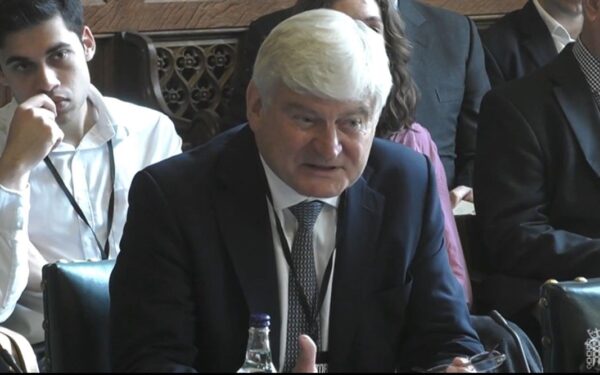Official data released last week showed that the UK economy fell into a “technical” recession at the end of 2023. GDP contracted in the third and fourth quarters of last year, satisfying the most commonly used criterion for determining recessions – two consecutive quarters of negative GDP growth.
Even if last week’s data had shown that the UK had dodged a recession, the bigger picture would still be one of prolonged stagnation. The UK economy has barely grown since early 2022. It has been close to recession for some time and, in the second half of last year, finally slipped into one. Last week’s GDP numbers are a belated acknowledgement of the difficult economic environment many people have struggled with for some time — with higher food, energy and mortgage costs squeezing household spending power.
The irony is that this acknowledgement comes just as the economic outlook seems to have brightened. Inflation is on a downward trajectory; real earnings are rising and mortgage rates have fallen back. Newly revised data show that, remarkably, unemployment fell through the second half of last year just as the economy moved into recession. Consumer and business confidence have risen in recent months signalling that many feel the worst is past.
This apparent disconnect between the GDP data and the real economy raises the question of how recessions are defined. Some argue that defining a recession as two or more quarters of negative GDP growth will, on occasions, create situations in which a technical recession occurs at a time when the rest of the economy is in reasonable shape.
Critics point to what they see as a superior system for identifying recessions in the US, where a panel of economists, at the National Bureau of Economic Research (NBER), examine a number of economic indicators in addition to GDP. The panel assesses whether there has been a broad-based decline in activity, lasting long enough to warrant the term recession. The NBER panel ruled that the two quarters of contracting US GDP in the first half of 2022 did not constitute a recession since it coincided with an unusually strong jobs market. That proved prescient. US GDP growth accelerated rapidly from the second half of 2022 and 2023 proved to be a good year for the US, with GDP growth of 2.5 per cent.
The US experience in 2022 was unusual in that two quarters of falling GDP was followed by an upswing. If GDP contracts for a couple of quarters, and is not subsequently revised up, a deep downturn is on the cards. In the last 50 years, the simple two-quarter definition has flagged each of the UK’s five major recessions. Truly technical two-quarter recessions, which inflict little serious damage, are the exception. We must hope that the decline in UK GDP in the second half of last year proves the exception.
The US approach to calling recessions seems more considered and better rooted in economic theory than the two-quarter definition. The snag is that the US measure is not timely. During the global financial crisis, the NBER panel called the US recession a full year after it had begun. The simpler definition, commonly used around the world except in North America and Japan, determines a recession as soon as the GDP data are announced.
It may be that last year’s UK recession will be revised away. The first estimate of GDP is a snapshot, and is subject to large revisions which can continue for years after the initial publication as more and better data become available and as methodologies are revised.
The latest revision to UK GDP growth in the second quarter of 1992 occurred, for instance, last September, so more than 30 years ago after the initial estimate. The scale of revisions can be material. The so-called double-dip recession of 2012, which occurred in the wake of the global financial crisis, showed a sizeable 1.0 per cent contraction in GDP in the first half of that year. Not only was that technical recession revised away, the current estimate shows that GDP grew by 0.8 per cent in the first half of 2012. Revisions transformed a serious recession into healthy growth.
We cannot count on the UK’s latest recession being revised away. But our current forecast envisages this recession will end up as a pretty modest affair with UK contracting by a total of 0.6 per cent, a fraction of the 5 per cent average contraction seen in the UK. We see growth coming back in the summer months and the economy expanding in the second half of this year.
That would constitute a very mild recession. But this relatively benign outturn could be demolished if inflation proves hard to break. Last week saw the release of the latest labour market data, with average wages growing at almost 6 per cent annually and job vacancies at historically high levels despite recent declines. Wage growth of 6.0 per cent is not consistent with the Bank of England’s 2.0 per cent inflation target. As Andrew Bailey, the Bank’s governor said last week, the supply side remains “very constrained” suggesting underlying price pressures are far from spent.
Sticky inflation and rapid wage growth could force the Bank’s hand, leading to further rate rises and upping the odds of a serious recession. It is not the most likely outcome, but it is a big risk to growth this year.
A personal view from Ian Stewart, Deloitte’s Chief Economist in the UK. Subscribe and/or view previous editions of the “Deloitte Monday Briefing” here.
Invitation to the Deloitte Academy webinar this week: AI and the Future of Employment – Assessing the Impact on Jobs. Professor Carl-Benedikt Frey, Associate Professor of AI & Work at the Oxford Internet Institute, will join me this Wednesday to share his thinking on the impact of GenAI on nature and the future of work. This session will take place on Wednesday, 21 February, from 0900–1030 GMT. Register, for what I think will be a fascinating session, here.
Write to us with your comments to be considered for publication at letters@reaction.life




